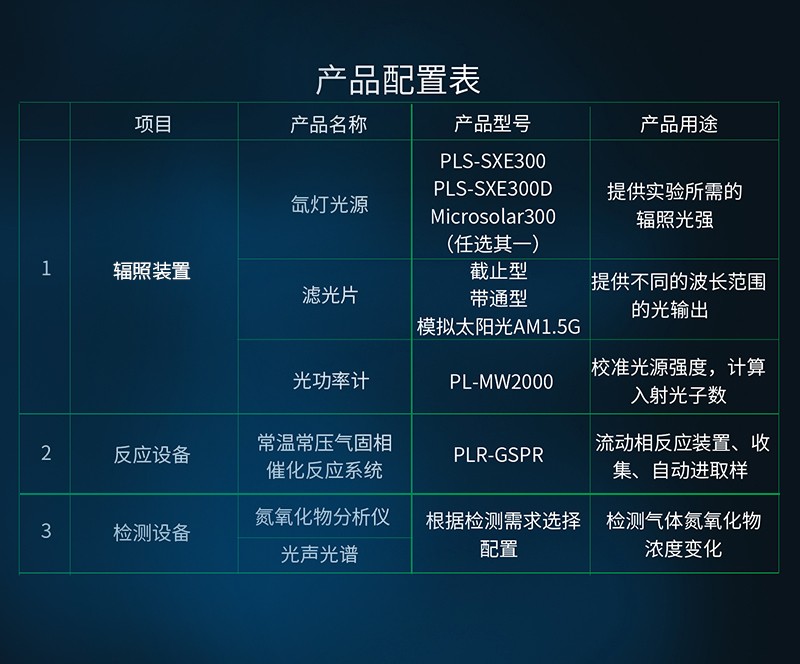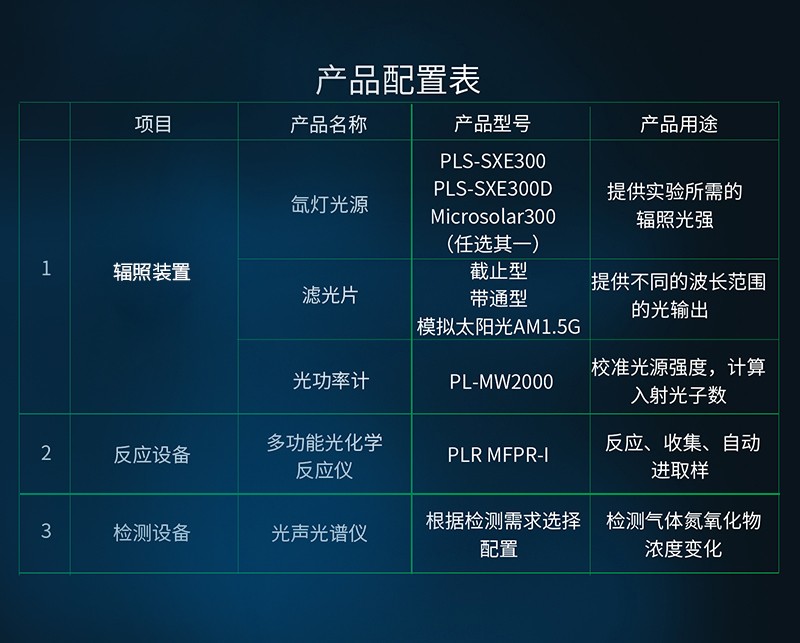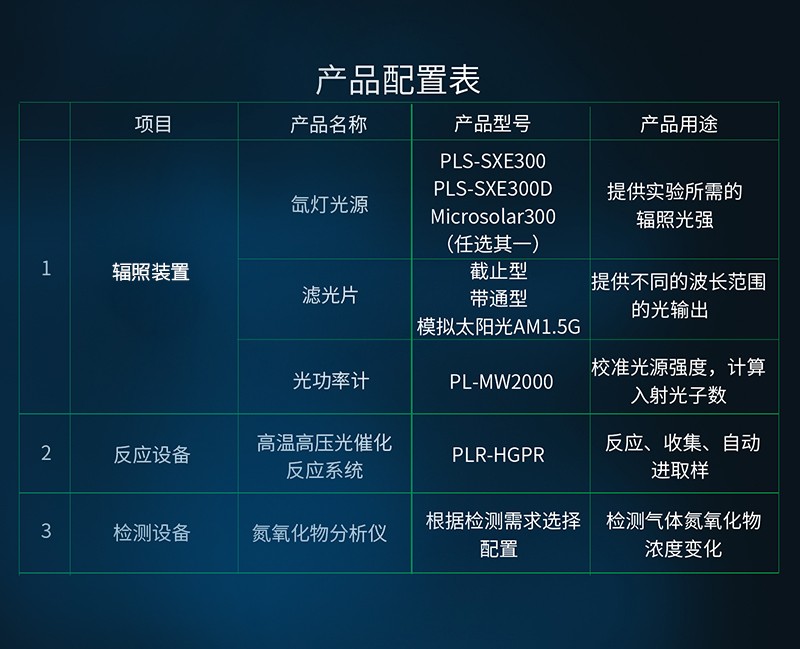Nitrogen oxides refer to compounds composed solely of nitrogen and oxygen elements. They encompass various compounds including nitrous oxide (N₂O), nitric oxide (NO), nitrogen dioxide (NO₂), dinitrogen trioxide (N₂O₃), dinitrogen tetroxide (N₂O₄), and dinitrogen pentoxide (N₂O₅). In occupational environments, exposure often involves several gas mixtures collectively referred to as "nitrogen oxides" or "nitrogen dioxide" (NO₂). Nitrogen oxides exhibit varying degrees of toxicity.
After fixation, nitrogen oxides can be transformed into ammonia gas, which plays a significant role in industries like fertilizers.
Configuration One: PLR-GSPR Ambient Pressure Gas-Solid Catalytic Reaction System + Nitrogen Oxides Detector or Photoacoustic Spectrometer
Configuration Two: Light Source + Multifunctional Photoreaction Apparatus + Nitrogen Oxides Detector
Configuration Three: Light Source + High-Temperature High-Pressure Photocatalytic Reaction System + Nitrogen Oxides Detector

Advantages of the Solutions
(1)Advantage Analysis:
1.Precise Flow Control: Utilizes high-precision mass flow meters for accurate control of flow rates, with a flow meter accuracy of ±1% F.S. and repeatability of ±0.5% F.S. Single-channel flow meters offer a wide selectable range from 0.01 NL/min to 10 NL/min, ensuring precise dilution ratios. Various flow control modes are also available.
2.Real-time Gas Monitoring: The ambient pressure gas-solid photocatalytic reaction system provides real-time monitoring of gas parameters such as inlet and outlet pressure, temperature, humidity, etc. This ensures system accuracy and repeatability.
3.Accurate Temperature Control: Temperature control range of -20 to 85 ℃ with precision of ±1 ℃ and resolution of 0.1 ℃.
4.Fully Automatic Controllable Valves: All valves can be controlled through a touchscreen interface, ensuring efficient and timely switching of valves.
5.Large LED Display Screen: Features an oversized LED display screen for visual monitoring of the entire reaction process.
6.Multiple Feedback Control Schemes: The system employs various feedback control strategies, significantly optimizing the experimental process and ensuring stability throughout.
7.Multiple Reactor Options: Offers a range of reactor options, providing versatility and potential for diverse experiments. This is based on the powerful design and development capabilities of PerfectLight and their well-established technical expertise.
8.Multiple Selectable and Adjustable Light Sources: Various light sources are available for selection, and their power can be adjusted from 10% to 100%. Options include UV lamps with wavelengths of 254 nm, 365 nm, etc.
9.Teflon Tubing for Entire System: The entire system's piping utilizes Teflon material, preventing corrosion, adsorption, and other adverse effects.
10.Optimized System Structure: The system structure has been optimized for a compact and aesthetically pleasing design, with dimensions of only 450×512×460 mm.
11.Key Involvement in Standards: This critical apparatus plays a role in the formulation of both group and national standards for testing the degradation of nitrogen oxides in photocatalytic air purification materials.


Advantages of the Solution:
1.Tolerance to Temperature and Pressure: Capable of withstanding tests at certain temperatures and pressures, with a maximum temperature resistance of 180℃ and maximum pressure resistance of 0.9 MPa.
2.Compact Size: Small and compact design, occupying minimal laboratory space, thus saving valuable room.
3.Large Sample Ratio and High Sensitivity: Offers a large sample ratio and high sensitivity. The system volume is approximately 100 mL, with a quantitative loop of 0.2 mL.
4.Fully Automatic Sampling: Fully automated sampling capability, allowing for 24-hour unattended operation and time-saving benefits.
5.Versatile and Rich Functionality: Offers diverse and rich functionalities. It can be used for top illumination or side illumination and can perform both photochemical experiments and photoelectrochemical tests.
6.Expandable for Electrochemical and Photoelectrochemical Experiments: Can be expanded to conduct experiments involving electrocatalysis, photoelectrocatalysis, hydrogen production, and carbon dioxide reduction.


Advantages of the Solution:
1.High-Temperature, High-Pressure Differential Photocatalytic Reaction: Achieves differential photocatalytic reactions under high-temperature and high-pressure conditions with low gas flow rates.
2.High Pressure Resistance: The system boasts a maximum pressure resistance of up to 10 MPa, ensuring its ability to handle high-pressure conditions.
3.High Reaction Temperature: Capable of achieving a maximum reaction temperature of 380 ℃, enabling studies at elevated temperatures.
4.Dual-Stage Flow Valve and Pressure Valve Control: Equipped with dual-stage flow valves and dual-stage pressure valves control. Three inlet pathways can be controlled separately.
5.Integrated Safety Design: Features an integrated safety-designed protective casing for the entire system. It includes a safety relief valve to ensure the safety of experiments.
